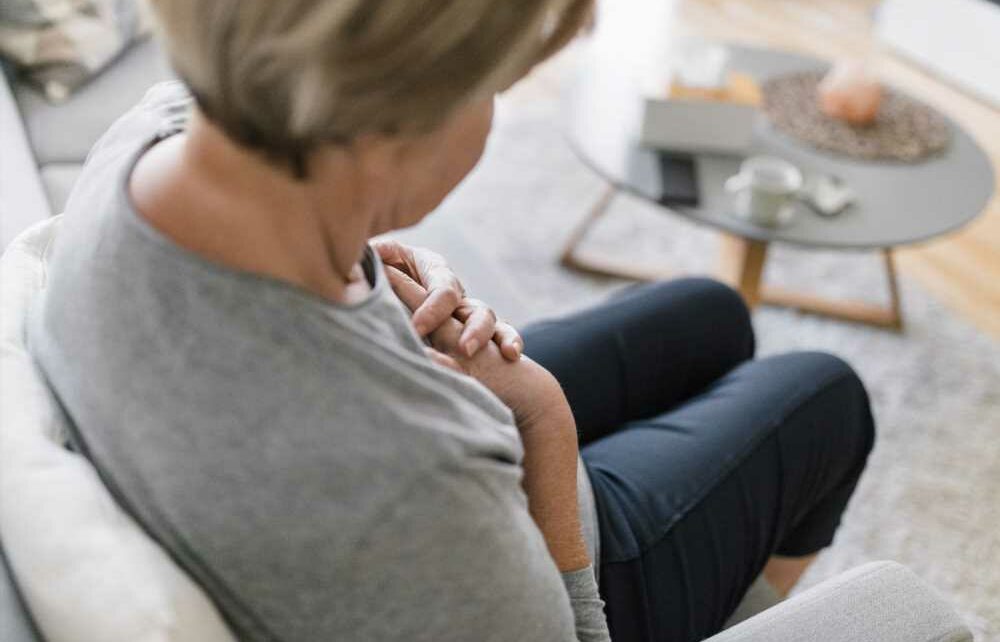A LOT of us think we could recognise the symptoms of a stroke.
Whether that's a drooping face, weakness down one arm or slurred speech, the acronym FAST can be used to pinpoint red flag signs that someone is having a medical emergency.
According to the NHS it includes:
- Face – the face may have dropped on one side, the person may not be able to smile, or their mouth or eye may have drooped
- Arms – the person may not be able to lift both arms and keep them there because of weakness or numbness in one arm
- Speech – their speech may be slurred or garbled, or the person may not be able to talk at all despite appearing to be awake; they may also have problems understanding what you're saying to them
- Time – it's time to dial 999 immediately if you notice any of these signs or symptoms
While these are useful markers to keep an eye out for, health experts say they might not always apply to women.
That's because women can experience different and more subtle symptoms when suffering a stroke.
Read more on strokes

Warning as woman, 35, suffers stroke triggered by a love bite HOURS earlier

I am sleep expert – snoring could mean you're at risk of a heart attack
While men are at slightly higher risk of having one, strokes are still one of the four leading causes of death in women in the UK, according to the Stroke Association.
So it's important to know the seven subtle signs of stroke in women so you can spot them.
According to Dr Hera Kamdar, an assistant professor of neurology at The Ohio State University Wexner Medical Center, they include:
- severe headache
- generalised weakness
- fatigue
- shortness of breath and chest pains
- nausea and vomiting
- brain fog
- hiccups
Most read in Health

Snoozing your alarm for 30 minutes could actually be GOOD for you – here’s why

My son would only eat Nutella and Pringles — but simple trick changed his diet

From oranges for breasts & wine for back pain – the best foods for your body

Siblings with ‘fatal insomnia’ face ‘unthinkable’ as one has weeks to live
Dr Hera Kamdar told CNN that while many stroke patients experience weakness on one side of their body, it might not be confined to that for women.
And since the symptoms are subtler, they may be confused with other health issues even if they come on suddenly, she went on.
Research conducted in 2019 suggests that women might get hiccups when they're experiencing a stroke as it's a sign of brain damage to areas like the medulla oblongata, which controls breathing, and the supratentorial cortex, which is involved in the control of movement.
That doesn't mean you should immediately panic that you're having a stroke if you suddenly get hiccups or you feel unusually drowsy.
You should only be concerned if the symptoms are so severe that they make it difficult to do anything.
For example, someone experiencing a stroke might feel so weak and tired that they physically can't get out of bed.
As for hiccups, they should only worry you if they're hurting your throat or you're getting them in combination with other symptoms such as vomiting.
What factors make women vulnerable to having a stroke?
Scientists reckon that the reason men and women experience stroke differently is down to hormones, citing oestrogen's anti-inflammatory effects that can protect against brain injury.
The female sex hormone can also help with increasing blood flow in the internal carotid artery, which supplies blood to the brain.
But taking synthetic oestrogen – for birth control or hormone replacement therapy (HRT) – can actually increase the risk of experiencing a stroke, according to Dr Kamdar.
The risk is stillsmall, but 8.5 out of every 100,000 women will experience a stroke because of birth control, according to research conducted in 2003.
Dr Eliza Miller, a neurologist at NewYork-Presbyterian/Columbia University Irving Medical Center, told CNN: “It’s not that people shouldn’t take birth control, it’s that people with other [stroke] risk factors shouldn’t use this type of contraceptive."
As women make less oestrogen as they get older, they also develop a higher risk of experiencing a stroke.
In fact, Stroke Association notes: "Women tend to have strokes at a later age than men, and nearly half of all strokes (45 per cent) in women happen past the age of 80."
Even young women can be at risk of the medical emergency, according to Dr Miller, who said pregnancy can triple the risk of experiencing a stroke.
It's due to having pre-eclampsia – a blood pressure condition that affects one in 25 pregnancies in the UK, according to the British Heart Foundation.
Kim Kardashian is known to have suffered pre-eclampsia – which causes high blood pressure, severe headaches and swelling in the feet, hands and face – during her first two pregnancies.
Women who experience blood clots during pregnancy might also be at higher risk of a stroke.
What should I do if I think someone is having a stroke?
Aside from the three recognisable symptoms mentioned above, the NHS says other signs that someone is having a stroke include:
- complete paralysis of 1 side of the body
- sudden loss or blurring of vision
- being or feeling sick
- dizziness
- confusion
- difficulty understanding what others are saying
- problems with balance and co-ordination
- difficulty swallowing
- a sudden and very severe headache resulting in a blinding pain unlike anything experienced before
- loss of consciousness
Read More on The Sun

Celebrity Big Brother WILL return in March, & Phillip Schofield tops wanted list

Expert shares how you could make yourself ill by turning heating on now
If you suspect someone is having a stroke, you phone 999 immediately and ask for an ambulance.
Even if the symptoms disappear while you're waiting for the ambulance, it's still important to go to hospital for an assessment, the NHS notes.
Source: Read Full Article



